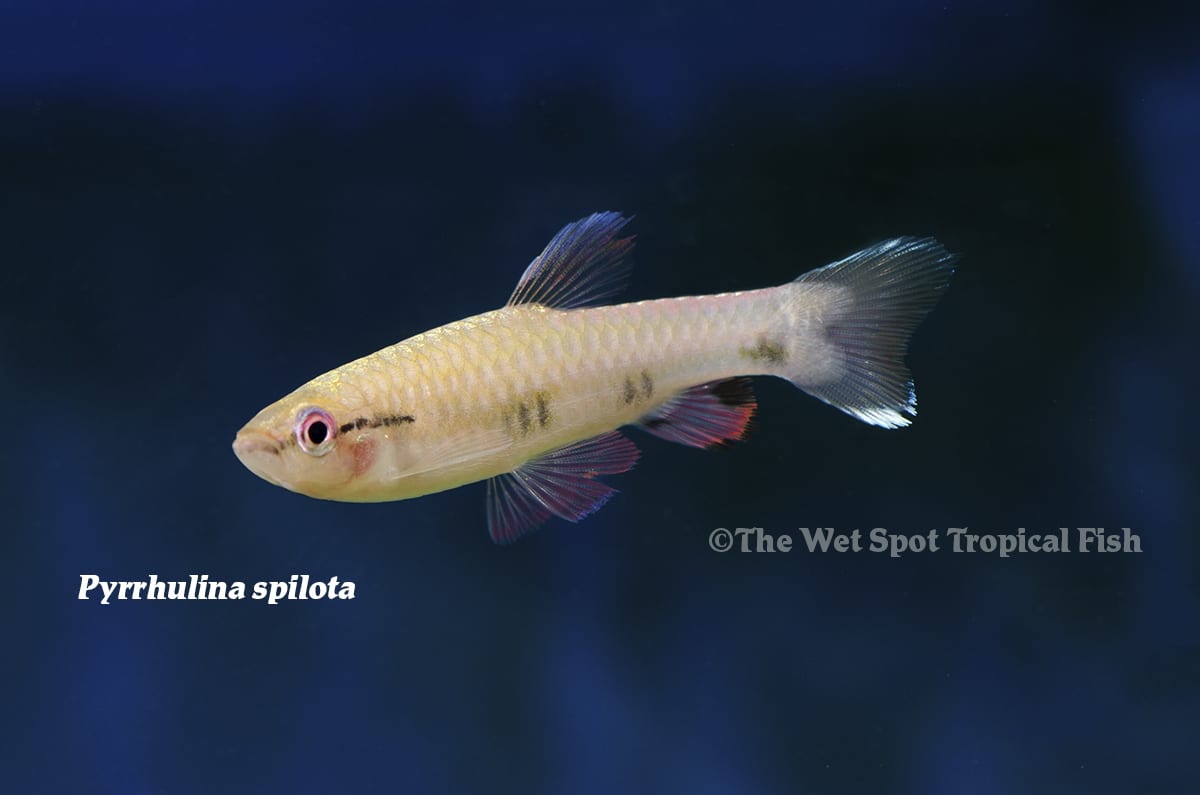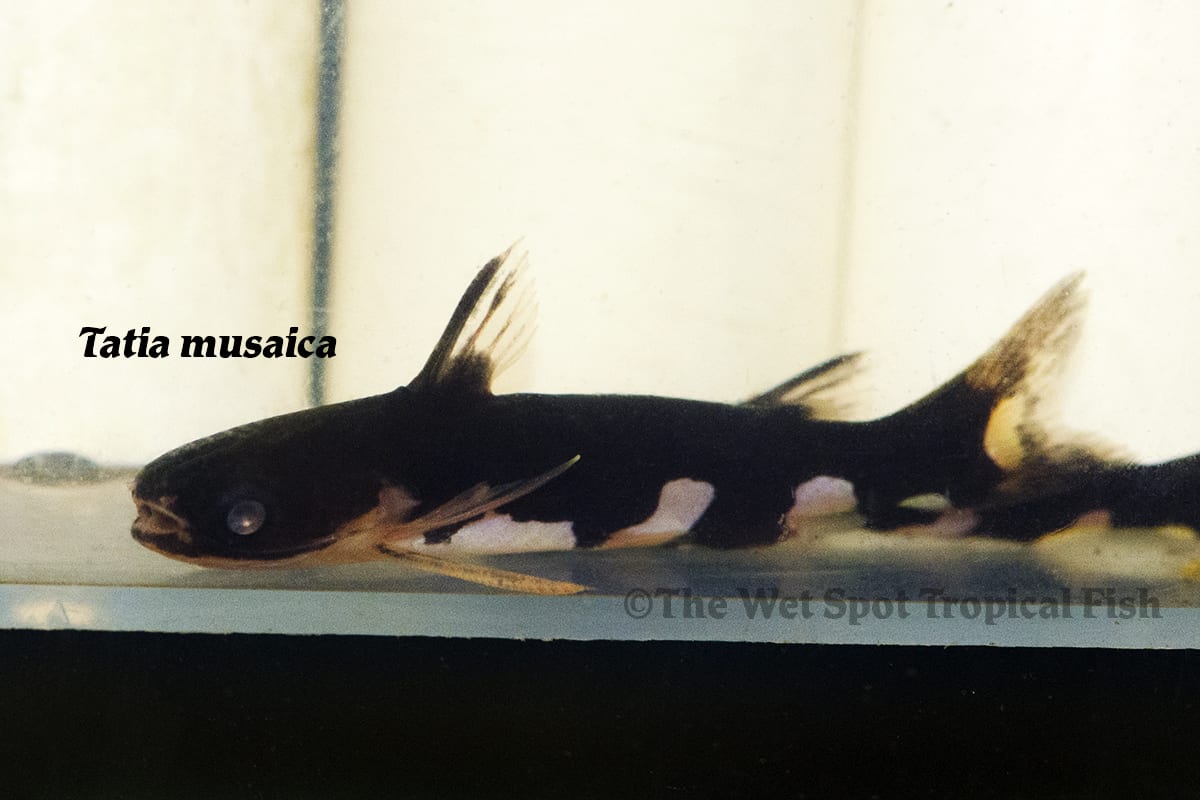Fish Worth Fighting For
Fish Worth Fighting For
Did you know that South America contains 3 of the top 10 countries that provide the most freshwater worldwide? The Global Water Partnership estimates that a third of the world’s’ freshwater come from Brazil, Colombia, and Peru. As global freshwater diminishes, and the price of water increases, we must protect these naturally occurring renewable resources. Not only would humans perish if these water sources dried up, but so would some of the most beautiful and interesting fish species. Our first step is to spread awareness to passionate freshwater aquarists by shining a spotlight on some of South America’s top swimmers, Apistogramma nijsseni, Pyrrhulina spilota, and Tatia musaica.
Scientific NameApistogramma nijsseni
Common NamePanda Apisto
Temperature / pH75 to 82°F / 5.0 to 6.5 pH
Native LocationPeru
Preferred DietSmall invertebrates
Known exclusively from the Rio Ucayali in northern Peru, A. nijsseni inhabits slow-moving blackwater streams and creeks stained by decaying vegetation. These apistos are breathtakingly beautiful where females reach 2.7 inches in length and exhibit canary-yellow bodies with black and grey accents, and fluttering fins. Males reach 3.3 inches in length and show much exaggerated purple-blue coloration over yellow cheeks with a bright red-orange tipped caudal fin. Rare, and beautiful adds up to diva-like behaviour for these fish as well. Only captive-bred individuals can be kept in community tanks, though wild specimens should be kept as a single pair in moderately-sized tanks, or in groups with 3:1 female to male ratio in a larger tank setups. Tanks should be equipped with soft, sandy substrate, plentiful driftwood, roots, tangles, and branches, dried leaf litter, and many cave-like hiding spots. Carnivores in the wild, feeding on benthic invertebrates, these cichlids can be fed regular meals of bloodworm, daphnia, artemia, supplemented by high-quality dried-pellets. Optimal water conditions include temperatures between 75 and 82°F, with a pH of 5.0 to 6.5, and hardness between 0 and 72 ppm.
Scientific NamePyrrhulina spilota
Common NameFour Spot Splash Tetra
Temperature / pH73 to 79°F / 5.8 to 7.0 pH
Native LocationPeru
Preferred DietOmnivorous
Local to the upper Amazon River basin in Peru, P. spilota is a rare South American export, known only to few freshwater aquarists. Reaching about 3 inches in length “Four-Spot Splash Tetras” do indeed exhibit 4 spots down the length of their red-yellow bodies. These swimmers are peaceful, “dither” fish, that can be kept in community tanks, as they pay little attention to tank-mates including territorial pair-bonding fish like apistos. These fish should be kept in groups with a heavily female-biased sex ratio as males fertilize eggs and guard fry of multiple females who lay eggs on submerged plants. Most likely omnivores in the wild consuming invertebrates and other microorganisms, they can be fed a wide variety of dried and frozen delicacies. These tetras are quite hardy, and don’t require much in the way of tank furnishings, though they do need aquatic vegetation for spawning. As surface dwellers, however, tanks will need a tight fitting lid to prevent jump-escapes. Waters are best maintained with temperatures between 73 and 79°F, with a pH of 5.8 to 7.0.
Scientific NameTatia musaica
Common NameNinja Wood Catfish
Temperature / pH72 to 79°F / 6.0 to 8.0 pH
Native LocationRio Orinoco
Preferred DietSmall invertebrates
Stealthily swimming through the upper Rio Orinoco, T. musaica, also known as the “Ninja Wood Catfish”, is truly hard to come by. These catfish are mostly brown with mottle lighter coloration on their underbellies, which allows them to blend perfectly amongst the driftwood, twigs, and woody bottoms of their native habitats. These catfish seek out cracks and crevices to hide out in the brightest parts of the day, emerging at night to chomp benthic invertebrates. Reaching only 2 inches in length at maturity, these catfish require small bites, and should be fed live and frozen insect larvae, bloodworm, and brine, with supplementation of high quality sinking pellets. These driftwood catfish are ideal nocturnal tank mates for the appropriate community tank, as they are peaceful and quite hardy; they are best kept alongside medium-sized fish that thrive in soft, acidic water conditions. Tanks will need to be equipped with soft, sandy substrate, many driftwood logs, twigs, and woody tangles, and low light. Waters should be maintained with temperatures between 72 and 79°F, pH of 6.0 to 8.0, and hardness around, and below 178 ppm.
The freshwater habitats of South America are home to a diverse array of tropical fish, each with their own eccentricities and unique beauty. These habitats are worth conserving, and by spreading human interactions with the very species to be conserved is a great step toward promoting reduced water waste! Encourage your friends and family to take the necessary steps by toting your South American tropical fish, and call the Wet Spot for more information!


